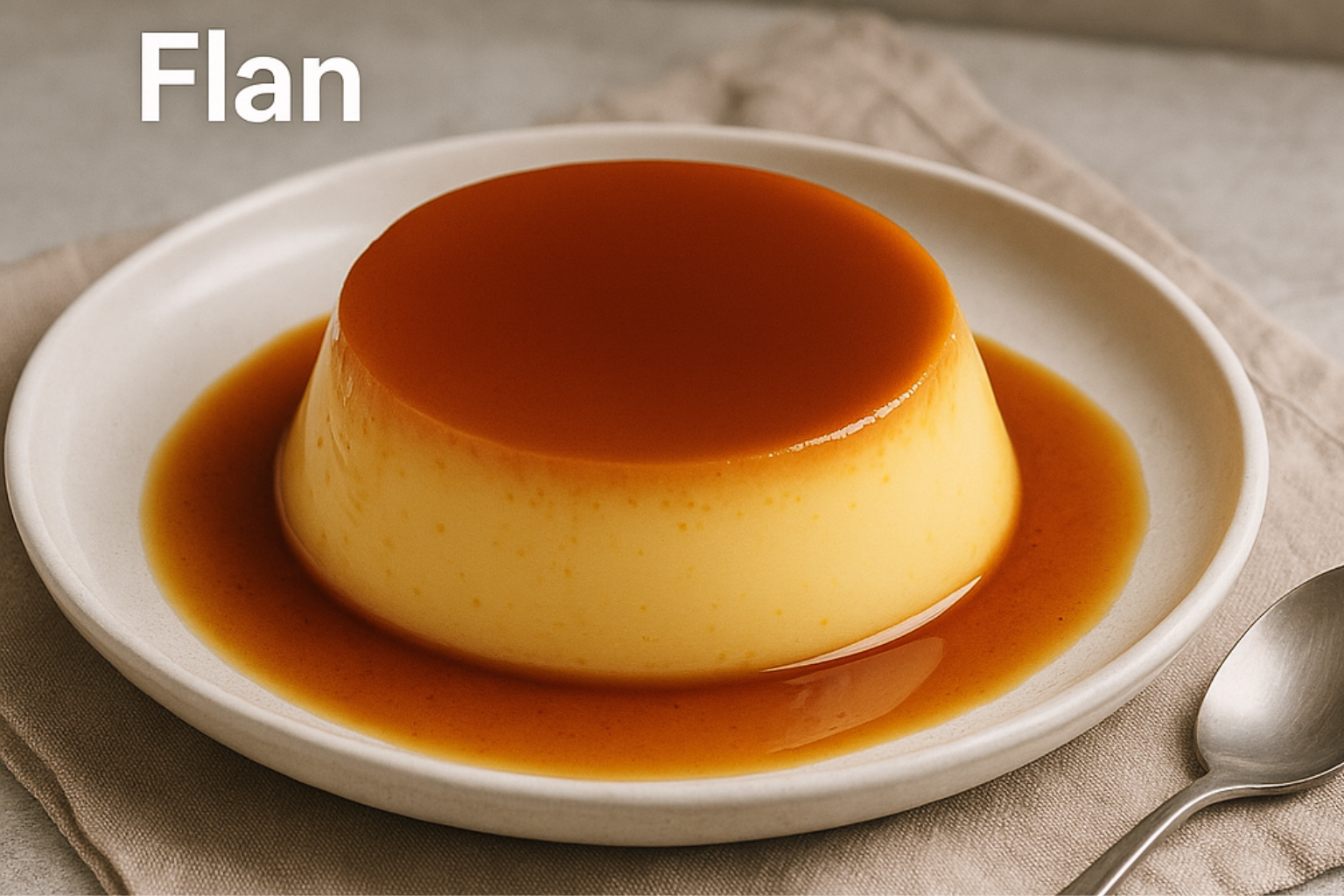Flan is one of those desserts that looks simple but demands technique. This silky caramel custard is known for its creamy texture, light wobble, and rich caramel top. But if you’ve ever made one and ended up with bubbles or holes inside, you’re not alone.
In this article, you’ll learn how to make a perfect flan — smooth, creamy, and free of holes. We’ll explore the common mistakes, key techniques, and small secrets that make all the difference.
What Is Flan?
Flan is a baked custard dessert made with:
- Eggs
- Milk (or cream)
- Sugar
- Vanilla
- A caramel layer on top
It’s baked in a water bath (bain-marie), then chilled and unmolded. The result is a smooth, melt-in-the-mouth dessert with a golden caramel glaze.
Common Flan Problems (And Why They Happen)
Let’s get this out of the way: most flan mistakes come from too much heat or overmixing.
| Problem | Cause |
|---|---|
| Holes or bubbles inside | Oven too hot / batter overmixed |
| Rubber-like texture | Overbaked / too many eggs |
| Flan doesn’t set | Undercooked or wrong ingredient ratio |
| Burnt caramel | Sugar heated too long or too fast |
Now, let’s avoid these.
Ingredients for Classic Flan
- 1 cup sugar (for the caramel)
- 4 large eggs
- 1 can (395g) sweetened condensed milk
- 1 can (320ml) evaporated milk or whole milk
- 1 teaspoon vanilla extract
Optional: a pinch of salt for balance
Step-by-Step: How to Make the Perfect Flan
1. Make the Caramel
- In a dry saucepan, heat the sugar slowly over medium heat.
- Do not stir — swirl the pan as the sugar melts.
- Once golden brown, pour it into your flan mold or ramekins and tilt to coat the bottom evenly.
- Let it harden while you prepare the custard.
⚠️ Watch carefully — caramel burns fast.
2. Prepare the Custard Gently
In a bowl:
- Crack the eggs and whisk gently, just enough to combine.
- Add condensed milk, evaporated milk, vanilla, and a pinch of salt.
- Mix until smooth — avoid whipping air into the mixture.
✅ Strain the custard through a sieve to remove any chalazae or foam. This helps ensure a silky texture.
3. Pour and Bake
- Pour custard gently over the set caramel.
- Place the mold in a bigger baking dish and fill the dish with hot water halfway up the sides (water bath).
- Cover with foil (loosely) to prevent a crust on top.
- Bake at 150–160°C (300–325°F) for 50–60 minutes.
You’ll know it’s ready when it jiggles like gelatin in the center, but isn’t liquid.
Tips to Prevent Holes or Bubbles
- Do not overmix: Stir, don’t whisk hard. Air creates bubbles that become holes.
- Always use a water bath: This ensures gentle, even heat.
- Strain the custard: A simple sieve removes air and solids.
- Bake low and slow: Higher heat causes the custard to puff up, crack, or bubble.
- Let it cool gradually: Rapid cooling can lead to texture changes.
Cooling and Unmolding
- Remove from oven and let it cool to room temperature in the water bath.
- Once cooled, refrigerate for at least 4 hours (or overnight).
- To unmold, run a knife around the edges and invert onto a plate.
If the flan doesn’t release easily, dip the bottom of the mold in hot water for 10 seconds before trying again.
Creative Twists on Classic Flan
Once you’ve mastered the base, try experimenting:
- Coffee flan: Add 1 tsp of instant espresso
- Coconut flan: Replace half the milk with coconut milk
- Orange flan: Add orange zest and a dash of juice
- Chocolate flan: Mix in melted dark chocolate
Top with toasted coconut, berries, or whipped cream if you like — but flan is just as elegant on its own.
Creamy Perfection Starts with Patience
Making a silky flan without holes or bubbles takes a little care and a lot of calm. The process is slow and soothing — just like the dessert itself. With gentle mixing, low heat, and patience, you’ll create a flan that’s elegant, luxurious, and better than anything store-bought.
Once you master this technique, you may never stop making it.

